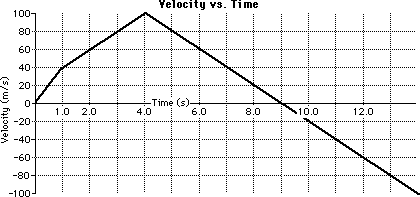Hello New Readers and those who have come back,
In this post I am going to be talking about Velocity, Displacement, Speed, Distance, Velocity Maps, Motion Maps, and Position Maps.
In this post I am going to be talking about Velocity, Displacement, Speed, Distance, Velocity Maps, Motion Maps, and Position Maps.
Velocity is change in X over time, which applies to the total distance over time covered in real life. This means that if someone were to walk 20 miles there, and 20 miles back over the course of 2 hours, their velocity would be 0mph even though they covered 40 miles.
Speed in this scenario, would be 20 miles per hour , as speed takes into account the distance covered continually over time which is 40/2.
Displacement is the change in x by the formula:
x= x final - x starting point.
This means that if I start walking along the valley, and walk down the hill, then back up to my initial position, my displacement is zero as my starting and ending points were the same, thus I have no displacement.
Velocity maps show how fast an object is going over seconds (or predetermined time intervals) and also shows direction. When a velocity map has a positive slope, it is going north of the original y axis interaction point, when the slope is negative, it has changed direction and is going southward.
In this graph, we can see that the object starts at 0, but then has a velocity of 40 m/s for 1 second, before slowing to a pace of 20 m/s for 3 seconds, thus covering 60 m in 3 seconds. At the 4 second mark, the object changes direction and goes south at a velocity of 20 m/s for 10 seconds. The final velocity of the whole trip is (displacement/ time), thus (100m/14s) which is approximately -7.14 m/s. The total displacement in the above scenario is 100 meters.
 |
| Taken from: http://www.physicsclassroom.com/Class/1DKin/U1L4b5.gif |
In this graph, we can see that the object starts at 0, but then has a velocity of 40 m/s for 1 second, before slowing to a pace of 20 m/s for 3 seconds, thus covering 60 m in 3 seconds. At the 4 second mark, the object changes direction and goes south at a velocity of 20 m/s for 10 seconds. The final velocity of the whole trip is (displacement/ time), thus (100m/14s) which is approximately -7.14 m/s. The total displacement in the above scenario is 100 meters.
In the world we live in, google maps uses displacement to give you an estimate of how far you will have to go, but really it is the total distance covered once you start the map that your estimate is based on once you actually hit the navigate button which is distance.
Velocity is the average of the displacement between your starting point and finishing point over the time it took you to make the journey. The formula based off displacement could resemble ((x=x final- x initial)/time)=velocity.
Speed is what your speedometer shows you at any given time, only taking into account how much ground is being covered (example: Miles), over the time (Example: hours), thus speed can be portrayed as miles per hour (mph).
Motion maps are useful in that they align with velocity over time maps, as well as position over time maps to give you a complete picture. They indicate where something is at a measured interval of time. So in the one below, we can see that for the first 3 seconds it covers a certain distance ( let us use 3 meters in this case), then for then the two upward dots indicate that it rests in place for 2 seconds, then based on the presumption that the amount of ground previously covered was 3 meters in 3 seconds, we can now see that it has accelerated as it covers 3 meters in 2 seconds. This comes down to a final velocity of 1.5 meters per second, and a displacement of 0, though a distance covered of 6 meters.
Position over time map
Position over time maps can be used to find the velocity as well as draw a motion map based off of them. They tell you where an object is at any given point in time, which gives us the slope. The slope is the velocity for the object at that point in time.
So in this image we can tell that for the first 2 seconds it does not move, before changing direction and going south at 1 meter per second for 3 seconds, before it changes direction and speeds up going 3meters per second for 2 seconds before it comes to a rest.
 |
| Image taken from: http://harker-physics.wikispaces.com/file/view/GRAPH%202.jpg/461507878/246x260/GRAPH%202.jpg |
Position over time maps can be used to find the velocity as well as draw a motion map based off of them. They tell you where an object is at any given point in time, which gives us the slope. The slope is the velocity for the object at that point in time.
 | |
| Image taken from: http://www.algebralab.org/img/3e38cd8d-b44f-4bb6-b4ad-152ea360ffd3.gif |